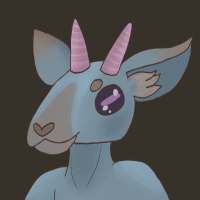Type: Large Insect
Average Length: 14ft
Average Weight: 124lbs
Average Lifespan: 10 years
Coloration
Zugrets come in several colors and patterns. It varies from location as they need to blend in with their environment for better hunting. The most common are a mix of mottled browns and greens. The rare desert variety ranges from light to dark tans with speckling on top to resemble the sandy and rocky environment.
Conservation
They are neither endangered or protected by laws. Zugrets are typically seen as threats to forest settlements and travelers. These insects are also considered an invasive species. It is believed some juveniles may have found their way aboard a ship leaving one of the sinking islands they may have originated from. Specialized adventurers are hired to hunt them down on occasion for purpose of gathering useful materials or to protect settlements that may be in danger from them.
Diet
Zugrets are omnivores. They'll gladly devour a wide variety of living or dead things. Aside from gobbling up unfortunate adventurers and travelers, they have been observed eating just about any smaller creature that passes through their habitat. They use their mandibles to slice things into small pieces. Their venom helps break material down for easy slurping. Fruits and forgotten carcasses are also on the menu.
Useful Parts
Over time, as people figured out how to kill the zugret, discoveries were made about their body parts. The hard exoskeleton can be used in armor plating. If ground into a powder, the shell dust can be used to fortify bricks and concrete. The process requires special tools to break down, but is possible. Zugret venom can be used to coat arrows and weapons for quick kills. Egg membranes can also be used in medicine and potions for their anti fungal properties. If boiled for long enough, the eggs produce a vibrant red dye/pigment.
Zugret meat is surprisingly tender and juicy. It is advised to avoid the head and first body section due to the potential of venom contamination. The rest of the body meat is edible. Many say the meat tastes like a mix of crab and shrimp, but with more earthy undertones. The preferred cooking method is boiling the meat in the shell and serving with melted herb butter. Some enjoy eating it from the shell with a spoon after boiling. Others enjoy removing the meat from the shell and grilling it after coating in a sweet and savory sauce.
All parts tend to be expensive, however, due to the dangers of fetching them. There are currently no farms to breed and raise them. Some research is being done to make farming them safe and possible.









The average length is 14ft?! That's terrifying. As an insect, I would also be afraid they would breed quite quickly yet live to 22 years? (Are they cannibals?) AND they deliberately sharpen their mandibles? Ahhh! I wouldn't want to go in any forests infested with zugrets :'(
Some info may change (as I'm still working on this, kinda placed numbers down to start with), but yeah, they're pretty scary. Oooh, the cannibal idea could be neat. Like they pick off weak members (and not waste a food opportunity if one dies).